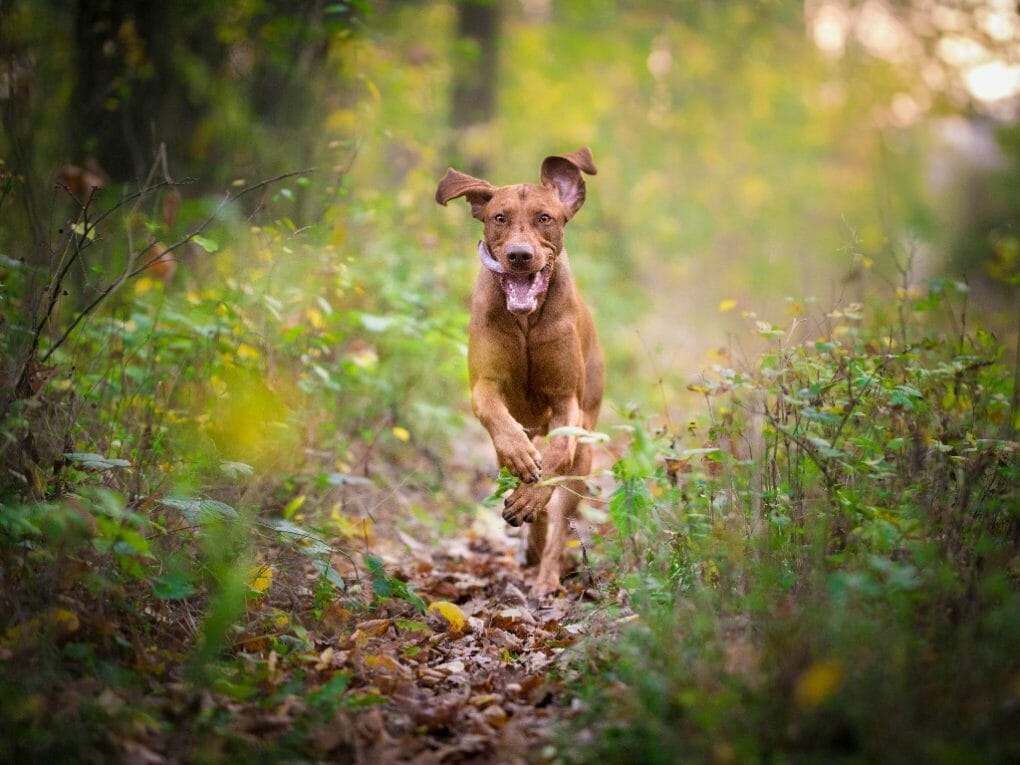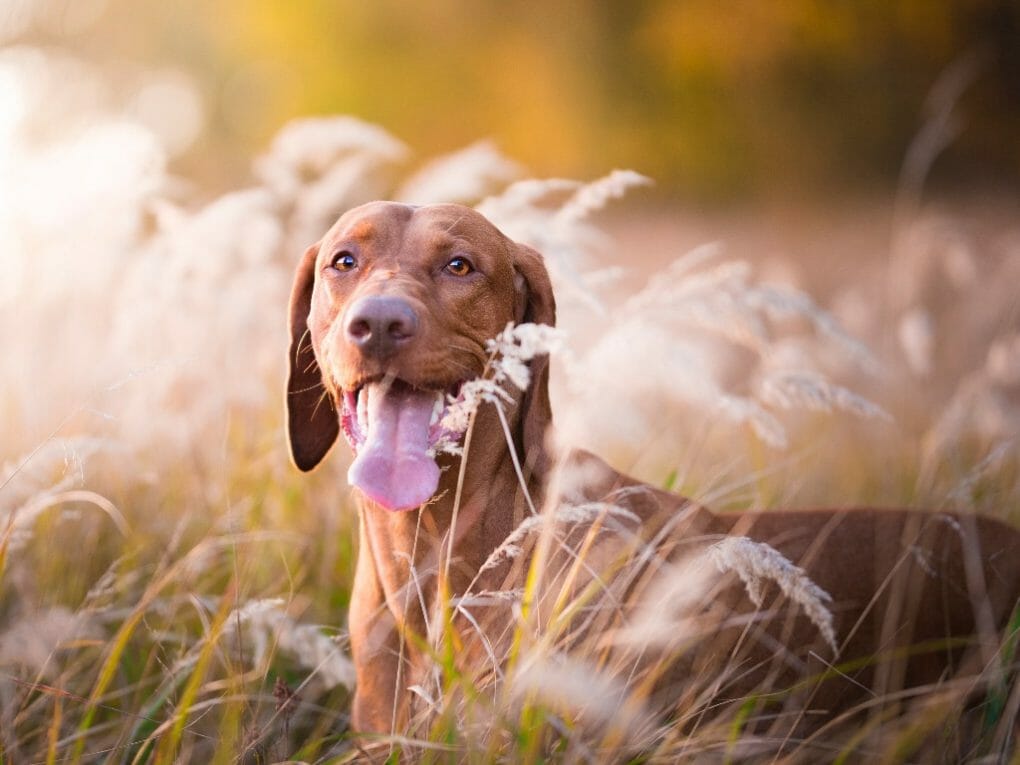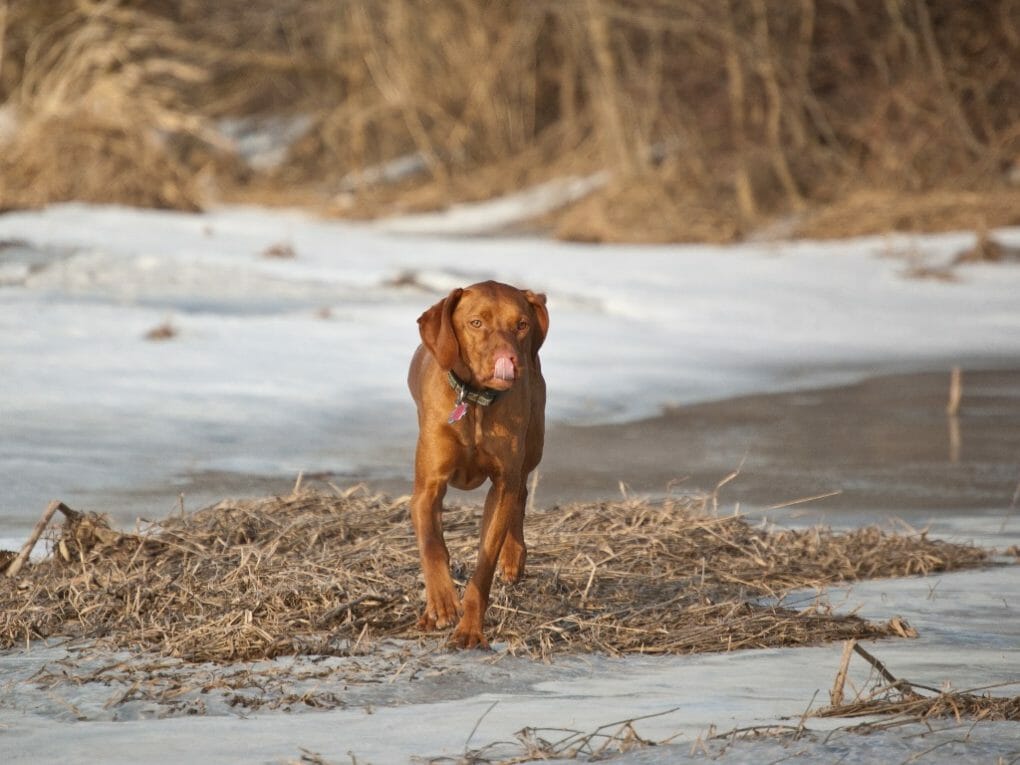Vizsla vs. German Shorthaired Pointer: Key Differences Between These Breeds Every Dog Owner Should Know


Vizslas are known for their energetic personalities and strong hunting instincts. On the other hand, German Shorthaired Pointers are considered to be more trainable and calm family dogs. Vizslas tend to be taller and have a longer back than Germans, making them better suited for sporting activities such as tracking and running competitions.
While both breeds of dogs make excellent pets, Vizsla owners may consider adding some obedience training. In contrast, German Shorthaired Pointer owners can focus on their non-hunting activity with little need for instruction. The best dog breed will ultimately depend on your specific needs and wants.
Table of Contents
Critical Differences Between Vizsla and German Shorthaired Pointer
While the Vizsla might be considered the better breed overall for various reasons – such as being gentler with people and animals (due to its hunting background), these dogs have their share of pros and cons. Consequently, owners should consider all relevant factors before deciding whether to get a Vizsla or German Shorthaired Pointer.
Size
Regarding size, the Vizsla is slightly larger than the German Shorthaired Pointer. Both dogs have a thick coat of fur that helps them keep warm in cold weather.
Vizslas are known for their calm and gentle temperament, making them perfect family pets. Germans have more energy than Vizslas and are better suited for hunting or tracking games.
Appearance
Regarding the appearance of their fur, Vizslas are typically smaller and have a more delicate look compared to German Shorthaired Pointers. They also have denser, shorter hair that is either black or brown, while German Shorthaired Pointers have a longer, shaggy coat that can be any color.
Ancestry and Breeding
The Vizsla is the ancestor of the German Shorthaired Pointer. They share many features, including their hunting dog heritage and short coats. The Vizsla is also leaner than the German Shorthaired Pointer, with a shorter coat that needs less maintenance, and both love to exercise – the Vizsla enjoys running and playing fetch!
Lifespan


When it comes to lifespan, the Vizsla dog reigns supreme. These dogs typically have a lifespan of 12 to 15 years, which is longer than the German Shorthaired Pointer’s lifespan of 12 to 14 years. However, despite this difference, both breeds make great family pets and excellent hunting companions.
Temperament and Focus
The German Shorthaired Pointer and Vizsla are known for their excellent hunting abilities and trainability. Temperament-wise, Germans are known to be more laid-back and friendly than Vizslas, who are typically more independent and alert.
This makes them easier to train; on the other hand, teaching a Vizsla may require greater attention as they can be harder to housetrain and require more time outdoors for daily exercise. They are also known for their playful and excitable nature.
Compared to Vizslas, German Shorthaired Pointers typically have a stronger prey drive, which means they’re more focused on animal targets. So if you’re looking for a dog that can handle long distances without pause, a German Shorthaired Pointer is perfect!
They both have an intense hunting instinct, but Vizslas are better at retrieving the game, while Germans are better at chasing prey down.
Hair and Care
There’s no question that Vizslas and German Shorthaired Pointers have different hair types – Vizslas have shorter, denser fur that needs attention every few weeks, while the latter’s long locks (and sometimes tails) can go months without a brush.
This means that Vizslas need to be groomed more often because their short fur doesn’t hold as much water and dirt as a German Shorthaired Pointer’s wooly hair does.
Additionally, Vizsla must be exercised regularly; if you cannot provide this for one reason or another, neither dog is likely to fit into your lifestyle. Therefore, when deciding whether or not to get a Vizsla or German Shorthaired Pointer, there are many factors to consider: your lifestyle, the location of your home, and the type of coat your dog has.
Adaptability
Both breeds are known for their adaptability and intelligence, which makes them great family dogs. As a result, training them can be done quickly and easily. Vizslas may need some training time to get used to households – but this is usually only a minor issue.
If you’re planning on taking your dog out in hot weather, German Shorthaired Pointers are a better choice than Vizslas. They have a higher tolerance and can handle the heat better.
German Shorthaired Pointers are well-equipped to handle cold weather with thick coats. However, Vizsla puppies will do well in cold weather, too – their thicker skin helps keep them warm. Both dogs make great pets and can be trained to do many different tricks. If you need help determining which breed is right, consider choosing one of these adaptable breeds!
You can train both dogs to work in cold weather, but Vizsla would be better due to their temperament and training. Please keep your dog exercised and well-fed during cold months so that they remain healthy and happy.
Trainability
German Shorthaired Pointers are more trainable than Vizslas, but both dogs are great for families with kids. Vizslas make good guard dogs because of their high aggression toward other animals. They offer a lot of versatility, making them good candidates for family pets or hunting companionship. They are also great for preventing burglaries and defending homes from intruders.
If you’re looking for a great dog with kids, then a Vizsla is a perfect breed for you. So if you’re looking for a great dog to protect your home, a German Shorthaired Pointer is the right breed.
Other Characteristics


If you’re looking for a dog to help you take down prey, you should consider the German Shorthaired Pointer. These dogs are hunting dogs with different characteristics that set them apart from Vizslas.
For one, German Shorthaired Pointers are known for their speed and agility and can outrun most other dogs, making them perfect for hunting fast and agile prey. Additionally, the German Shorthaired Pointer is more focused on the cattle breed, meaning they are better suited for hunting large game such as deer and elk.
